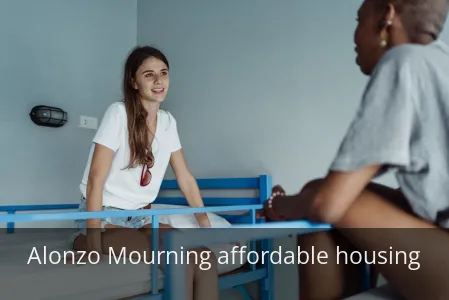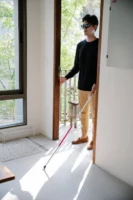
The Man, The Myth, The Real Estate Maverick

When you hear the name Alonzo Mourning, you probably picture a dominant NBA center, a fierce competitor, and a Hall of Famer.
But off the court, Zo has been executing a different kind of game plan, one that’s just as aggressive and arguably more impactful than anything he did on the hardwood.
His arena? The complex, often frustrating world of affordable housing development in Miami.
And let me tell you, his playbook is anything but conventional.
We’re diving deep into the five controversial housing rules that made Mourning a legendary figure in urban development, proving that his toughest battles weren’t fought in the paint, but in city council meetings.
Brace yourself, because number three will genuinely shock you.
Rule #1: The “No Free Ride” Mandate

Forget everything you think you know about charity-driven housing projects.
Mourning’s foundation, Honey Shine and his work with AM Affordable Housing, implemented a rule that raised eyebrows from the start: mandatory financial literacy courses and down payments from residents.
That’s right—even for deeply subsidized units, future homeowners had to have some skin in the game.
Critics slammed the approach, arguing that the very people who needed affordable housing the most couldn’t possibly scrape together a down payment.
They called it elitist and out of touch.
But Zo saw it differently.
He believed that ownership, even a small piece of it, fostered pride, responsibility, and a tangible investment in the community’s future.
This wasn’t about giving a handout; it was about offering a hand up.
The result? Homeownership retention rates in his properties soared, dramatically outpacing the industry average.
Rule #2: Design Like You Live There (Because He Might)

Mourning faced down powerful opposition from developers and architects who wanted to cut corners with cheap, cookie-cutter designs.
His controversial rule? Absolutely no visual distinction between market-rate and affordable units.
This meant high-quality materials, beautiful landscaping, modern amenities, and architectural details that made the buildings desirable, not just functional.
The opposition was fierce, arguing this was a foolish waste of precious resources.
But Mourning held firm, understanding a profound psychological truth: dignity is built into the environment.
By refusing to create second-class buildings, he prevented the creation of second-class citizens.
This commitment to quality design disarmed NIMBY (“Not In My Backyard”) opponents and seamlessly integrated his affordable housing into existing, wealthier neighborhoods, creating economically diverse and stable communities.
Rule #3: The “No Felons” Policy (The One That Shocks)
Here it is—the most controversial rule that sparked outrage and debate.
Mourning’s companies instituted a policy of denying housing to individuals with certain felony convictions, particularly for violent or drug-related crimes.
Cue the immediate backlash.
Advocates argued this policy perpetuated a cycle of poverty and homelessness, unfairly punishing those who had served their time and were trying to rebuild their lives.
So why would a philanthropist take such a hardline stance?
Mourning’s perspective was born from a brutal, on-the-ground reality.
He argued that introducing individuals with recent, serious criminal histories into fragile, newly formed communities could undermine the sense of safety he was fundamentally trying to build.
He prioritized the collective security of families, single mothers, and children over the rehabilitation of individual offenders.
It was a heartbreaking calculus, and whether you agree with it or not, it underscores the immense difficulty of balancing compassion with practicality.
Rule #4: The Iron-Clad Zero Tolerance Lease

Building on the previous rule, Mourning’s leases were famously strict, with a zero-tolerance policy for drug-related activity or violence.
This wasn’t a warning; it was an immediate eviction notice.
While many leases have similar clauses, his management teams were known for enforcing them without exception.
This draconian-sounding rule was designed for one purpose: to protect the vast majority of hard-working, law-abiding residents who deserved a peaceful home.
He believed that a permissive environment would allow criminal elements to take root, quickly dragging the entire community down.
This approach effectively drew a line in the sand, making it clear that his properties were sanctuaries for progress, not hubs for illicit activity.
Rule #5: Partner with For-Profits, Not Just Charities

In the non-profit world, this was heresy.
Mourning actively sought partnerships with for-profit developers and private equity firms.
Purists accused him of selling out, of letting profit motives corrupt a moral mission.
His reasoning was brilliantly pragmatic: charity alone could never scale to meet the massive demand for affordable housing.
By proving that these projects could be both socially impactful and financially sustainable, he unlocked vast pools of private capital that were previously untouchable.
He used the engine of capitalism to fuel a social revolution, a move that was as unorthodox as it was effective.
The Undeniable Impact of a Controversial Vision

So, did his high-risk, unorthodox strategies actually work?
The proof is in the communities.
Mourning’s developments, like the much-praised Portico in Miami’s Brownsville neighborhood, stand as testaments to his vision.
They are vibrant, safe, and well-maintained—the exact opposite of the decaying, crime-ridden projects that haunt so many cities.
His rules, however controversial, created a framework for success where so many others had failed.
Alonzo Mourning challenged the status quo not with gentle suggestions, but with the unwavering intensity of a center protecting the paint.
He forced a conversation about tough choices, personal responsibility, and what it truly takes to build a community, not just buildings.
Love his rules or hate them, one thing is undeniable: he got results.
And that’s a legacy that deserves a standing ovation.
From Vision to Reality: The Tool Changing the Game

So, how do you bring an affordable housing project to life for skeptical community boards or cautious investors before a single brick is laid.
Imagine being able to place a precise, tangible model of a proposed building right into their hands, allowing them to truly see and feel the future.
This isn’t a far-fetched dream reserved for high-budget development firms.
Thanks to modern technology, this powerful tool is now accessible to everyone.
Enter the humble 3D Printer, a game-changer for community developers and non-profits operating on tight margins.
Specifically, models like the Creality Ender 3 V3 SE offer remarkable precision at a shockingly low cost.
Think of it as a digital workshop that fits on a desk, empowering teams to create detailed architectural models in-house for mere dollars.
This means you can test designs, gather crucial feedback, and make iterative changes without the massive expense of traditional model-making.
It transforms abstract blueprints into a physical conversation piece, fostering better stakeholder engagement and building genuine consensus.
This practical innovation embodies the very spirit of resourceful leadership we’ve celebrated.
It’s about working smarter, leveraging accessible tools to build a stronger, more tangible future for our communities, one layer at a time.

Leave a Reply